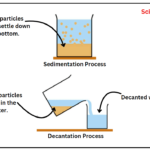Top 28 Constituent Assembly of India MCQ Questions
Welcome to this challenging Constituent Assembly of India MCQ quiz! In this quiz, we’ve compiled the top 28 multiple-choice questions based on the Constituent Assembly of India. These MCQ quizzes will test your knowledge and boost your preparation for UPSC, SSC, Railway, and State PCS exams. You will get the scorecard at the end of quiz test.
So, are you ready to score 28/28? Let’s find out how well you really know the Constituent Assembly of India. Let’s begin with question number 1.👇
1. Who first gave the idea of a Constituent Assembly for India?
A. C.G. Roy
B. M.N. Roy
C. Dr. B.R. Ambedkar
D. Jawaharlal Nehru
b
The idea of constituent assembly for India was put forward for the first time M.N. Roy in 1934. In 1935, the Indian National Congress (INC) demanded a constituent assembly to frame constitution.
2. Who presided over the first meeting of the Constituent Assembly of India on 9 December 1946?
A. Dr. Rajendra Prasad
B. B.R. Ambedkar
C. Sachchidananda Sinha
D. H.V. Kamath
c
The first meeting of the Constituent Assembly was held on 9 December 1946 with Dr. Sachchidananda Sinha. He was the oldest member of the assembly and was elected as the temporary (provisional) chairman of the assembly.
3. On 11 December 1946, who was elected as the permanent President of the Constituent Assembly of India?
A. Jawaharlal Nehru
B. B.R. Ambedkar
C. Vallabhbhai Patel
D. Dr. Rajendra Prasad
d
On 11 December 1946, Dr. Rajendra Prasad was elected as the permanent President of the Constituent Assembly of India. H.C. Mukherjee was elected as vice-president of the assembly.
4. Who among of the following was the constitutional advisor to drafting committee of the constituent assembly of India?
A. B.N. Rau
B. K.M. Munshi
C. Jawaharlal Nehru
D. H.V. Kamath
a
Sir Benegal Narsing Rau (B.N. Rau) was appointed as the Constitutional Advisor to the Constituent Assembly.
5. The Constituent Assembly was formed under the recommendations of which plan?
A. Cripps Mission, 1942
B. August Offer, 1940
C. Cabinet Mission Plan, 1946
D. Mountbatten Plan, 1947
c
The Constituent Assembly was formed as per the Cabinet Mission Plan of 1946.
6. Who was the Chairman of the Drafting Committee of the Constitution?
A. B.N. Rau
B. Jawaharlal Nehru
C. K.M. Munshi
D. B.R. Ambedkar
d
B. R. Ambedkar was the Chairman of the Drafting Committee of the Constituent Assembly on 29 August 1947. He earned the title “Architect of the Indian Constitution”.
7. On which date was the Constitution of India officially adopted by the Constituent Assembly?
A. 15 August 1947
B. 26 November 1949
C. 24 January 1950
D. 26 January 1950
b
The Constitution was adopted on 26 November 1949 and came into effect on 26 January 1950.
8. The Constituent Assembly of India started functioning from
A. 9th December 1946
B. 1st January 1947
C. 26th January 1950
D. 15th August 1947
a
The first meeting of the Constituent Assembly was held on 9 December 1946 in the Constitution Hall (now Central Hall of Parliament). Dr. Sachchidananda Sinha presided as the temporary Chairman.
9. Who among the following had moved the objective resolution, which formed the basis of the preamble of the constituent assembly on 13th December,1946?
A. B.R. Ambedkar
B. Vallabhbhai Patel
C. Rajendra Prasad
D. Jawaharlal Nehru
d
On 13 December 1946, Jawaharlal Nehru moved the Objective Resolution, which later became the Preamble of the Constitution.
10. Who among the following was not a member of the Constituent Assembly of India?
A. Sardar Vallabhbhai Patel
B. Acharya J. B. Kripalani
C. Jay Prakash Narayan
D. K.M. Munshi
c
Jay Prakash Narayan (JP) was a Socialist leader, but not a member of the Constituent Assembly.
11. How many sessions of the Indian Constituent Assembly were conducted for the formulation of the Indian Constitution?
A. 7
B. 11
C. 12
D. 15
b
The Constituent Assembly met for 11 sessions between 9 December 1946 and 24 January 1950. In total, the Assembly held 165 sittings to draft and finalize the Constitution.
12. How much time constituent Assembly took to frame the constituent of India?
A. 2 years 7 months 23 days
B. 2 years 6 months 15 days
C. 2 years 11 months 18 days
D. 3 years 11 month 20 days
c
The Constituent Assembly took 2 years, 11 months, and 18 days to complete the Constitution of India. This included 11 sessions and 165 days of sittings.
13. The Constituent Assembly set up a Drafting Committee under the chairmanship of Dr. B.R. Ambedkar on:
A. 13th December 1946
B. 22nd January 1947
C. 3rd June 1947
D. 29th August 1947
d
The Drafting Committee was appointed on 29 August 1947 by the Constituent Assembly. It consisted of 7 members with Dr. B.R. Ambedkar as the chairman. This committee was responsible for preparing the first draft of the Constitution of India.
14. Who was the Chairman of the Union Powers Committee of the Constituent Assembly of India?
A. Sardar Vallabhbhai Patel
B. Dr. B.R. Ambedkar
C. Sir Alladi Krishnaswami Ayyar
D. Pt. Jawaharlal Nehru
d
The Union Powers Committee was one of the key committees of the Constituent Assembly. It was chaired by Pandit Jawaharlal Nehru. He was also the Chairman of the Provincial Constitution Committee.
15. Who among the following was the Chairman of the Advisory Committee on Fundamental Rights, Minorities, and Tribal and Excluded Areas?
A. Sardar Vallabhbhai Patel
B. Dr. B.R. Ambedkar
C. Pt. Jawaharlal Nehru
D. B. Pattabhi Sitaramayya
a
Sardar Vallabhbhai Patel is a member of the Constituent Assembly and Chairman of the Advisory Committee on Fundamental Rights, Minorities, and Tribal and Excluded Areas.
16. How many members were included in the Constitution Drafting Committee of India?
A. 5
B. 6
C. 7
D. 8
c
The Drafting Committee of the Constituent Assembly was set up on 29 August 1947. It had 7 members with Dr. B.R. Ambedkar as the Chairman. The members were Dr. B.R. Ambedkar (Chairman), N. Gopalaswami Ayyangar, Alladi Krishnaswami Ayyar, K.M. Munshi, Mohammad Saadulla, B.L. Mitter (later replaced by N. Madhava Rau), and D.P. Khaitan (after his death, replaced by T.T. Krishnamachari).
17. How many members were there in the Constituent Assembly after the Partition of India?
A. 296
B. 299
C. 385
D. 389
b
The Constituent Assembly of India initially comprised 389 members, but following the Partition of India, this number was reduced to 299. 284 members were actually present on the 26th Nov, 1949 and signed on the finally approved Constitution of India.
18. Who among the following was the President of the Constituent Assembly of Independent India?
A. Dr. B.R. Ambedkar
B. Dr. Rajendra Prasad
C. Sachchidananda Sinha
D. Pt. Jawaharlal Nehru
b
On 11 December 1946, Dr. Rajendra Prasad was elected as the permanent President of the Constituent Assembly. After India became independent on 15 August 1947, the same Constituent Assembly continued as the Sovereign Constituent Assembly of Independent India, still under the presidency of Dr. Rajendra Prasad. Later, in 1950, he also became the first President of the Republic of India.
19. In the Constituent Assembly, who advocated for the deferment of adult franchise for 15 years?
A. Maulana Abul Kalam Azad
B. Jawaharlal Nehru
C. H.V. Kamath
D. T.T. Krishnamachari
a
Maulana Abul Kalam Azad advocated the deferment of adult franchise for 15 years.
20. How were the members of the Constituent Assembly of India elected?
A. By the people of India through direct elections
B. By the Governor-General of India
C. By the British Parliament
D. By the provincial assemblies
d
The Constituent Assembly of India was formed in 1946 under the Cabinet Mission Plan. Its members were not directly elected by the people. They were indirectly elected by the Provincial Legislative Assemblies, which were themselves elected on a limited franchise (based on property, tax, and education qualifications). Initially, the Constituent Assembly of India had 389 members, with 292 representing provinces, 93 representing princely states, and 4 representing Chief Commissioner’s provinces. After the partition, the membership was reduced to 299.
21. Which of the following was adopted as the symbol (seal) of the Constituent Assembly of India?
A. The Lion Capital of Ashoka at Sarnath
B. The Elephant from the Indus Valley Seal
C. The Elephant from the Ajanta Caves
D. The Bull from the Indus Valley Seal
c
The seal of the Constituent Assembly carried the image of an elephant from the Ajanta Caves. This symbolized India’s cultural heritage and historical continuity.
22. Constitution Day is celebrated in India on which date?
A. 15th August
B. 26th November
C. 26th January
D. 9th December
b
On 26 November 1949, the Constituent Assembly adopted the Constitution of India. The day is celebrated as Constitution Day. The day is also known as “Samvidhan Divas” or “National Law Day”.
23. Who is regarded as the “Father of the Indian Constitution”?
A. Jawaharlal Nehru
B. Sardar Patel
C. Dr. B.R. Ambedkar
D. None of the above
c
Dr. B.R. Ambedkar, as Chairman of the Drafting Committee, played the most crucial role in framing the Indian Constitution.
24. The lengthiest written Constitution in the world belongs to which country?
A. USA
B. France
C. UK
D. India
d
The Indian Constitution is the longest written Constitution in the world, originally containing 395 Articles, 22 Parts, and 8 Schedules (now expanded).
25. Which part of the Constitution of India was influenced most by the Objective Resolution?
A. Fundamental Rights
B. Directive Principles of State Policy
C. Preamble
D. Schedules
c
The Preamble of the Indian Constitution is based on the Objective Resolution moved by Pt. Nehru.
26. Consider the following principles of the Objective Resolution (1946):
- To proclaim India to be an Independent Sovereign Democratic Republic.
- To have a federal form of government with the distribution of powers between the Centre and the States.
- To guarantee and secure justice, equality, freedom of thought, expression, belief, faith, worship, and vocation.
- To provide adequate safeguards for minorities and backward classes.
- Adoption of Universal Adult Franchise immediately.
A. 1, 2, 3, 4 and 5
B. 1, 3 and 5 only
C. 2, 4 and 5 only
D. 1, 2, 3 and 4 only
d
The Objective Resolution (moved by Nehru, 13 Dec 1946; adopted on 22 Jan 1947) did not include universal adult franchise immediately. Universal adult franchise was included later by the Constituent Assembly in the Constitution (1950).
27. Who described the Objective Resolution as a “mirror of the national resolve”?
A. Mahatma Gandhi
B. Pt. Jawaharlal Nehru
C. K.M. Munshi
D. Sardar Patel
c
K. M. Munshi described the Objective Resolution as a mirror of the national resolve.
28. Match the following:
| Principles of Objective Resolution | Reflected in Constitution Part/Feature |
|---|---|
| 1. Sovereignty of India | A. Preamble |
| 2. Federal structure | B. Part XI (Centre-State Relations) |
| 3. Fundamental rights | C. Part III |
| 4. Safeguards for minorities | D. Part XVI |
A. 1-A, 2-B, 3-C, 4-D
B. 1-B, 2-A, 3-D, 4-C
C. 1-A, 2-C, 3-D, 4-B
D. 1-D, 2-B, 3-A, 4-C
a
Correct pair: 1-A, 2-B, 3-C, 4-D
Quiz Results
Total Questions: 0
Correct Answers: 0
Incorrect Answers: 0
Score: 0%






